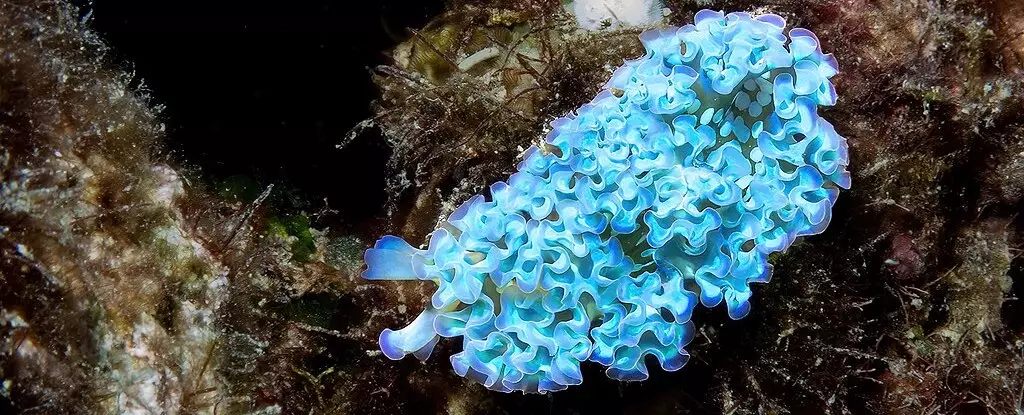In a world increasingly governed by complexity and inefficiency, the lettuce sea slug (Elysia crispata) emerges as a remarkable testament to nature’s ingenuity. This peculiar marine creature defies conventional understanding of biology by engaging in a practice so radical it might lead one to believe it has borrowed a page from science fiction. With a skill set that includes the audacious ability to purloin cellular components from algae, these slugs transform not just their diets but their very existence. This extraordinary heist goes beyond mere survival; it’s a profound revelation of what life can achieve when it maximizes its resources in the most unexpected ways.
The Art of Kleptoplasty
The lettuce sea slug’s ability to “steal” the photosynthesizing organelles from the algae it consumes is nothing short of astonishing. Instead of breaking down every part of the algae into digestible components, this slug opts for a more cunning approach: it siphons off chloroplasts and stashes them away in specialized structures within its gut, called kleptosomes. This biological sleight of hand allows the slug to harness the sun’s energy, engaging in a form of symbiosis that has puzzled and fascinated researchers alike. It may sound like a plot twist straight out of a fantasy novel, but this phenomenon—termed kleptoplasty—opens the door to a deeper understanding of organismal relations and energy transfer in nature.
It raises intriguing questions about ownership and agency in ecosystems. If a creature can coexist symbiotically with another organism merely by commandeering its cellular machinery, what does that say about the boundaries we place on moral and ethical interactions among different life forms? In a broader ecological context, the lettuce sea slug becomes a symbol of resilience, adaptability, and the far-reaching impacts of evolutionary mechanics.
Beyond Basic Survival
Further examination of the lettuce sea slug reveals that its kleptoplastic abilities grant it more than just a free meal. The vibrant colors of these slugs—ranging from green to a striking orange—are indicative of their health and well-being. Slugs thriving on chloroplast energy tend to display the lush green hues of the algae from which they derive their sustenance. Conversely, those that face food shortages often lose this coloration and appear more orange, a striking visual representation of their survival struggle. This dynamic shift speaks to the broader theme of physical transformation as indicative of internal physiological states, illuminating how interconnected life is within aquatic ecosystems.
Moreover, the intertwining of the slug’s proteins with those of the chloroplasts illustrates a deeper level of integration between species. It presents the idea that these organisms are not just temporary thieves; they negotiate and reconstruct the very fabric of their being. Such exchanges hint at evolutionary possibilities that, if understood fully, could illuminate various biological advancements across species, including our own.
Implications for Future Research
The implications of this research extend far beyond the boundaries of marine biology. Understanding how organisms acquire and utilize traits from others may help scientists dissect the lineage of complex cellular structures, shedding light on the origins of mitochondria and potentially even more complex cellular behaviors. Should we not consider the lessons that such organisms offer about adaptation and survival? In an era where climate threats loom larger than ever, the capacity for adaptability is not just a fascination—it is an untapped resource.
In rethinking how we view symbiotic relationships, we unlock not just a treasure trove of biological insights but a call to examine our own interactions—both with nature and among ourselves. Are we not sometimes the lettuce sea slugs in our pursuit of resources and knowledge? Engaging with the world around us means often assimilating the understandings and innovations of others. This dynamic echoes on societal levels, emphasizing a prevailing need for cooperative progress.
The lettuce sea slug’s remarkable biology serves as a living metaphor for resourcefulness in the natural world, echoing the calls for adaptability and thoughtful engagement with the world. Nature, in all its forms, challenges us to rethink the concept of ownership and collaboration, especially in troubled times. Such reflections could guide our path toward a more interconnected, sustainable future.

Leave a Reply